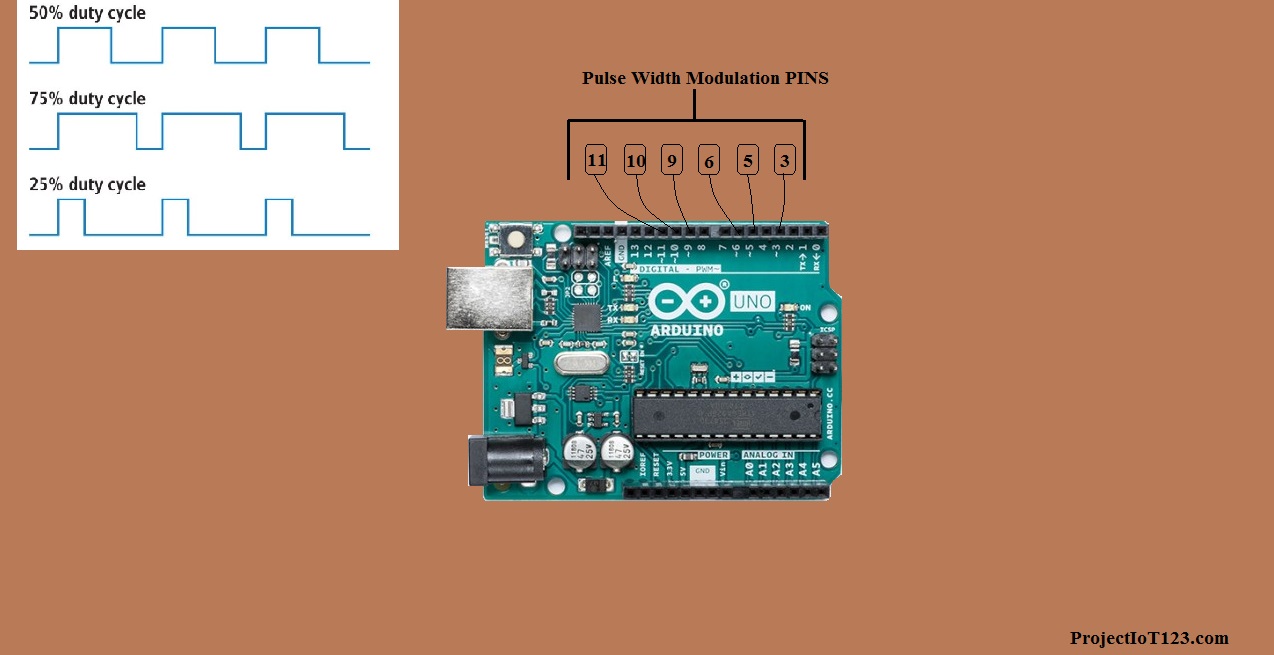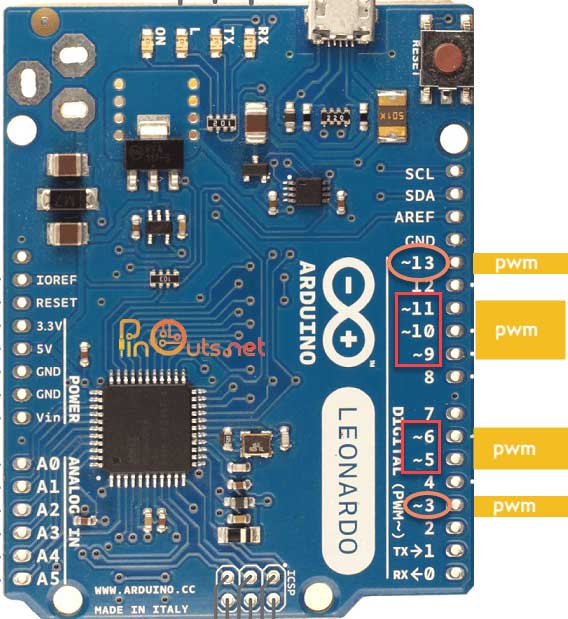

When this jumper is in place, the motor is enabled and spins at maximum speed. The module usually comes with a jumper on these pins.


Speed Control Pins :ENA and ENB are used to turn the motors ON, OFF and control its speed. The PWM block generates square pulses of varying duty cycle depending on the input value sent to the block on the Arduino hardware pin. Output Pins : The L298N motor driver’s output channels for the motor A and B are broken out to the edge of the module with two 3.5mm-pitch screw terminals.ĭirection Control Pins : The IN1 and IN2 pins control the direction of the motor A while IN3 and IN4 control the direction of the motor B.
#ARDUINO PWM DRIVER#
Warning : if the motor power supply is greater than 12V, you should remove the jumper to avoid the on-board 5V regulator from getting damaged.Also DO NOT supply power to both the motor power supply input and 5V power supply input when jumper is in place. Instead of using a latch and the for arduinos PWM pins, we have a fully-dedicated PWM driver chip onboard Arduino pin 3 is used to turn the transistor on and off and is given the name motorPin in the sketch - avec un PWM de 95 (mieux vaut éviter datteindre 100, le IR2112 naimera pas), le moteur sera presque à fond dans lautre sens. And they both sink to a common ground named ‘ GND ’. ' Vss ' is used for driving the logic circuitry which can be 5 to 7V. Power Supply : From ' Vs ' pin the H-Bridge gets its power for driving the motors which can be 5 to 35V. The L298N is a dual-channel H-Bridge motor driver capable of driving a 2x DC motors, making it ideal for building two-wheel robots.
#ARDUINO PWM SERIAL#
Control a DC motor through the Serial port using PWM PWM with a. Let’s take a closer look at the pinout of L298N module and explain how it works. PWM - Pulse Width Modulation Related Examples. Here, for demonstration, three different color LEDs (Red, Green and Blue) are used. The module can drive DC motors that have voltages between 5 and 35V, with a peak current up to 2A. Here is an Arduino based circuit with three independent pulse width modulated (PWM) channels to fulfil your requirements Just follow the schematic diagram to complete the construction, and use any standard 9VDC Arduino power source to energize the system. This leads to a change in the direction of the motor. The L298N is a dual H-Bridge motor driver which allows speed and direction control of two DC motors at the same time. In Arduino IDE, we use PWM concept through analogWrite() function. H-Bridge – For controlling rotation direction: An H-Bridge circuit contains four switches with the motor at the center forming an H, closing two particular switches at the same time reverses the polarity of the voltage applied to the motor. Generally, Arduinos PWM frequency is about 500Hz.
#ARDUINO PWM SERIES#
PWM – For controlling speed: PWM is a technique where average value of the input voltage is adjusted by sending a series of On/OFF pulses, the average voltage is proportional to the width of the pulses known as Duty Cycle.The higher the duty cycle, the greater the average voltage applied to the dc motor this lead to the highest speed.


 0 kommentar(er)
0 kommentar(er)
